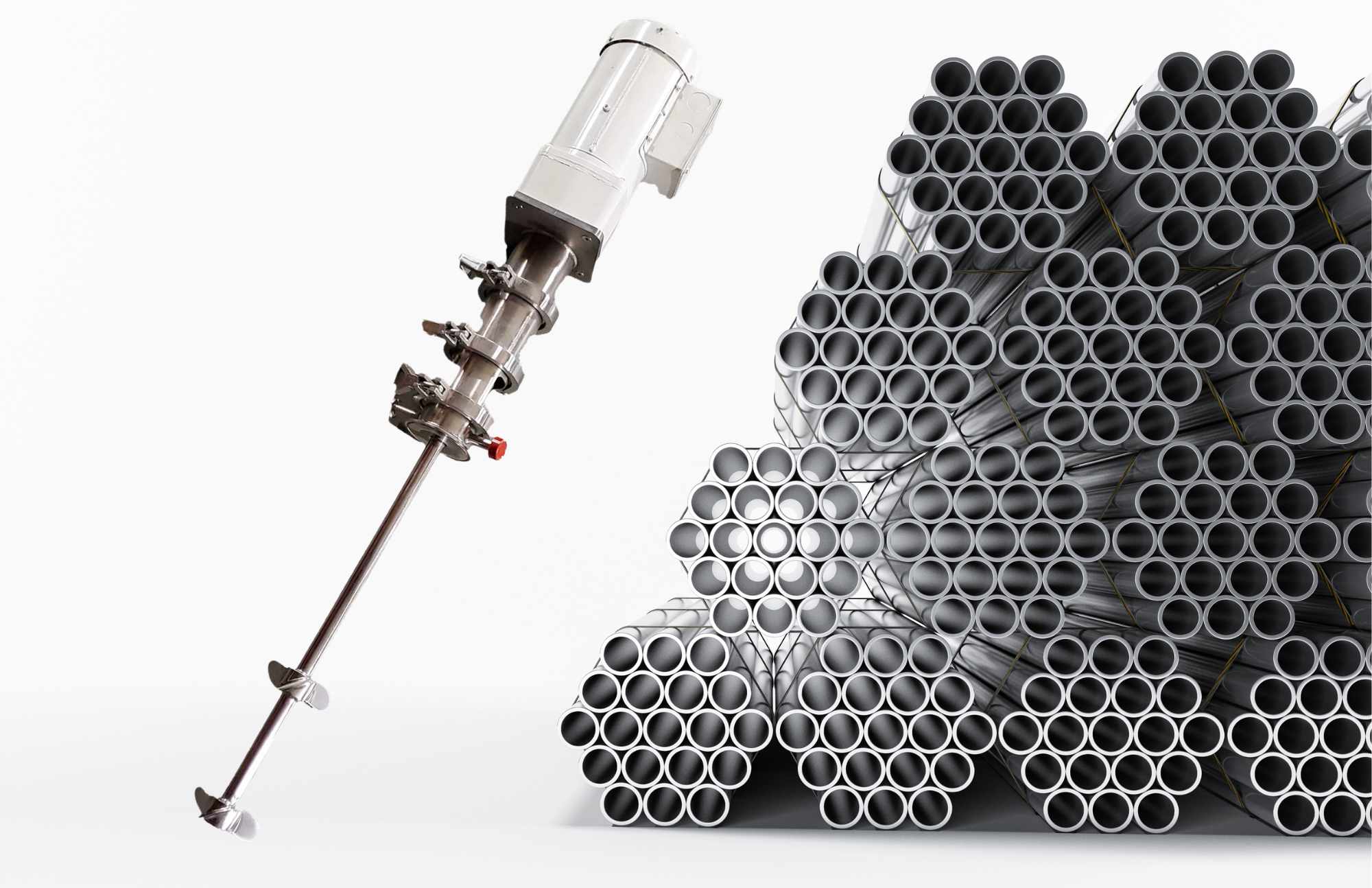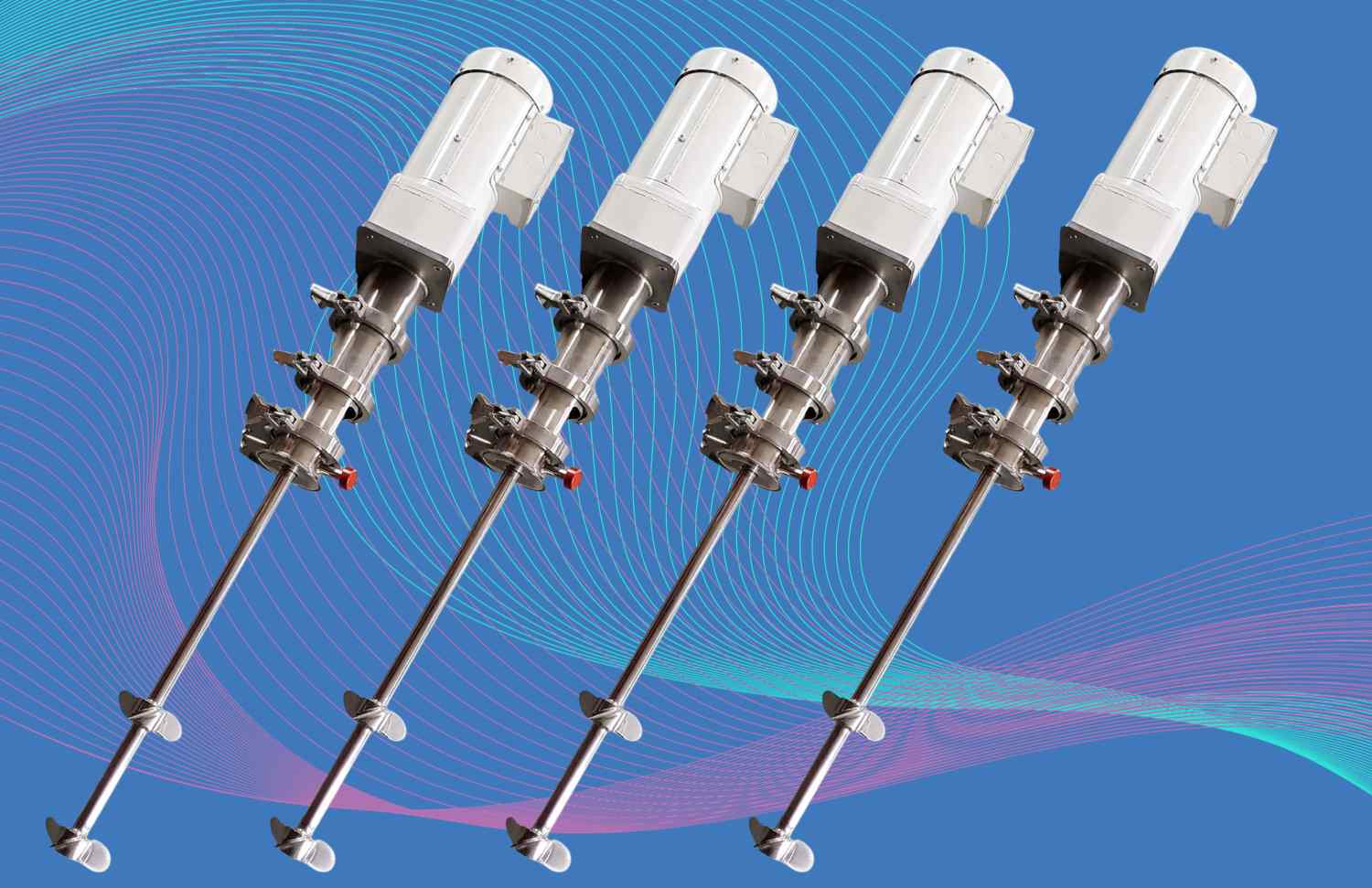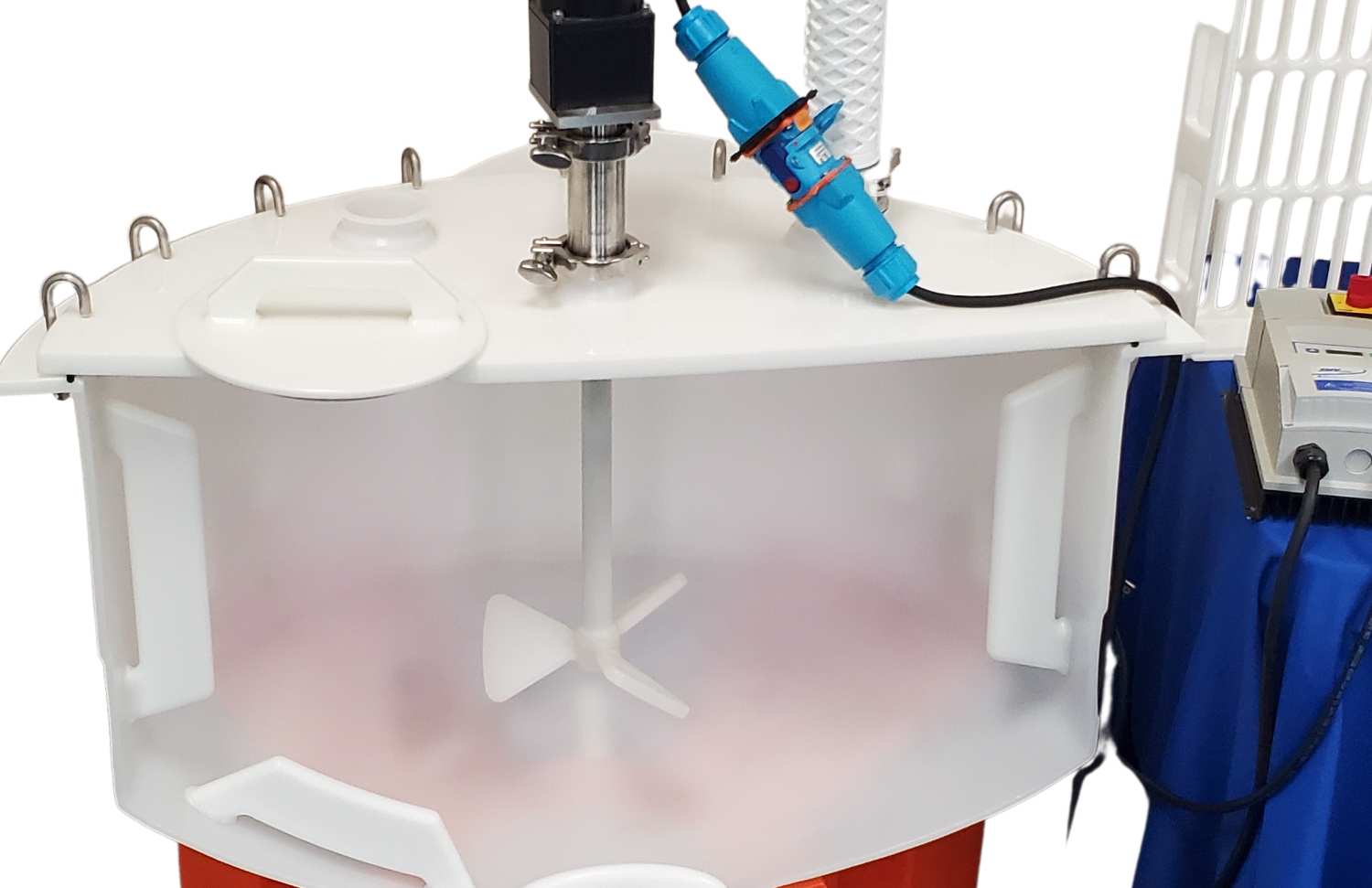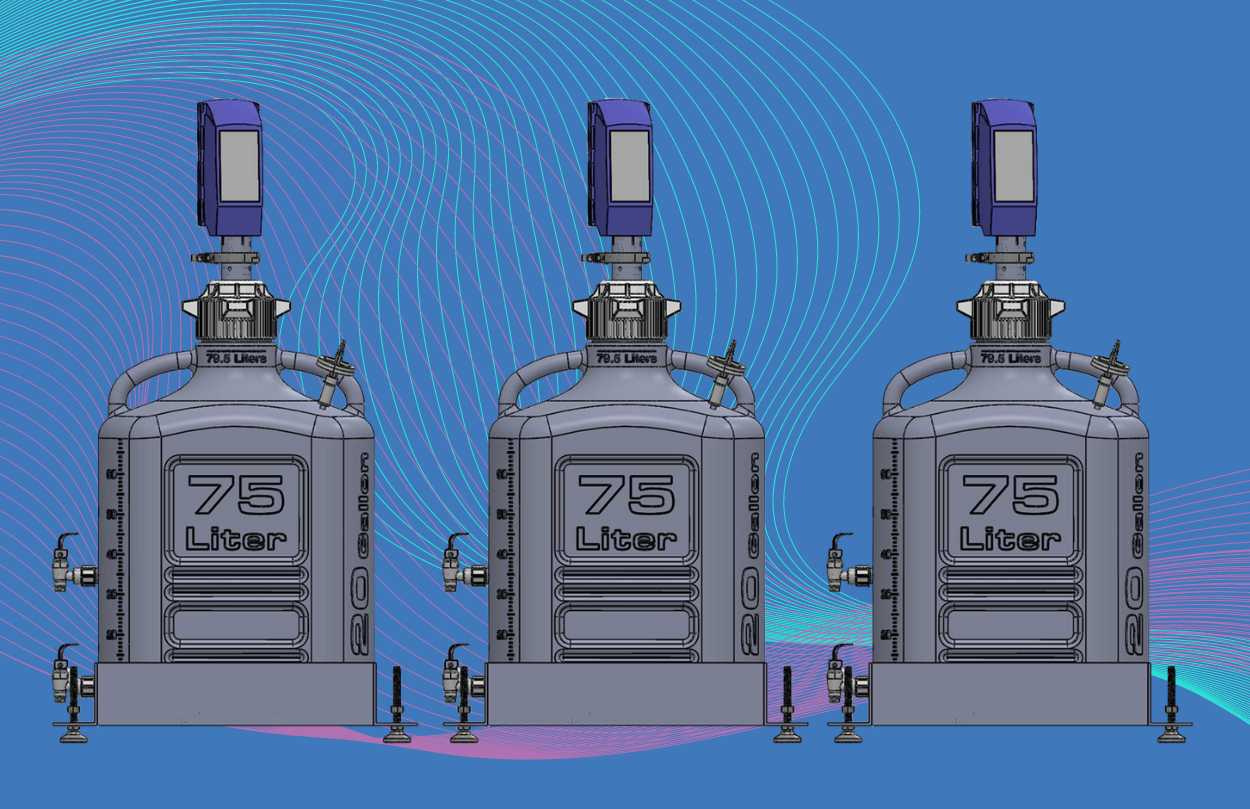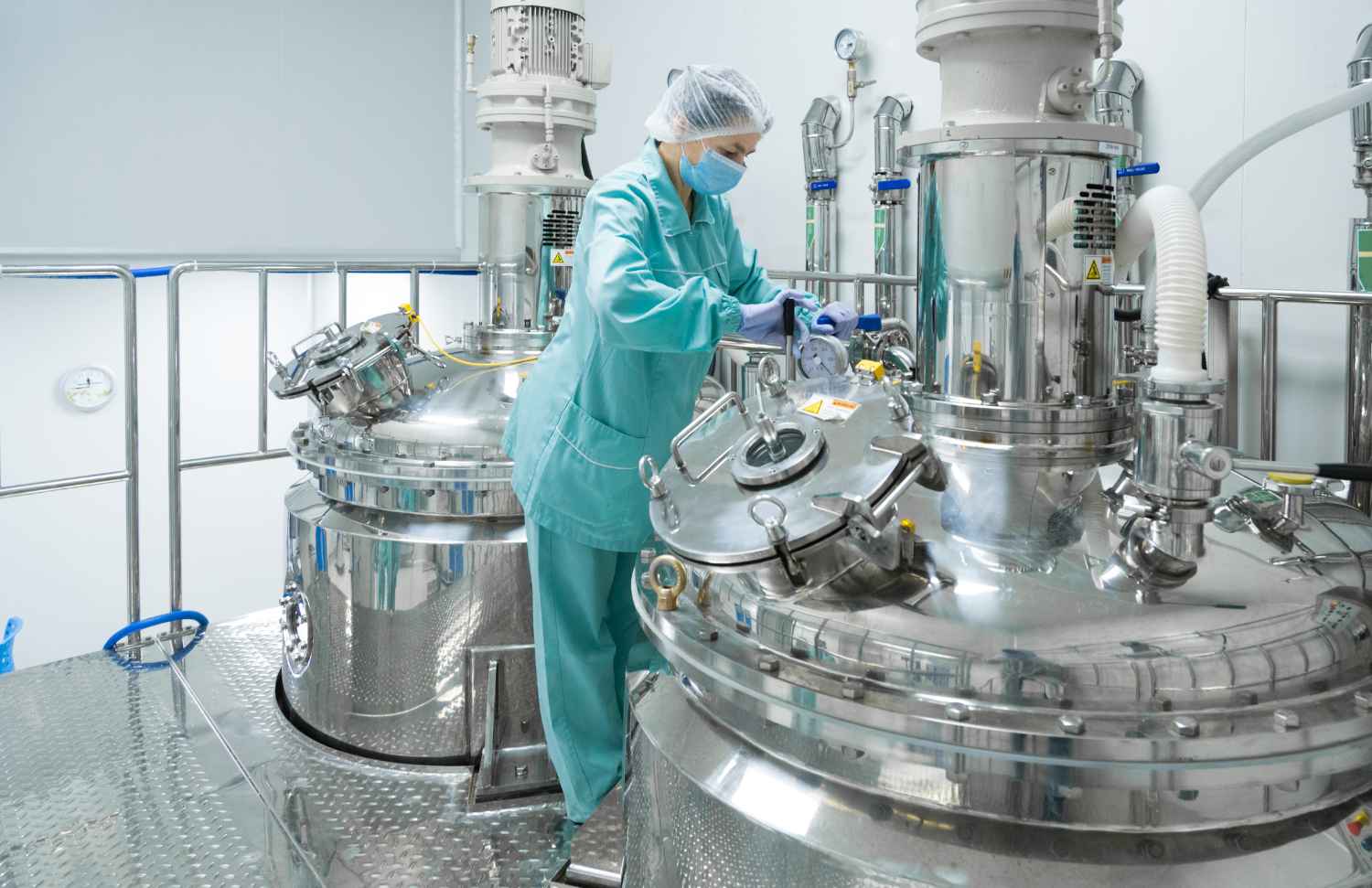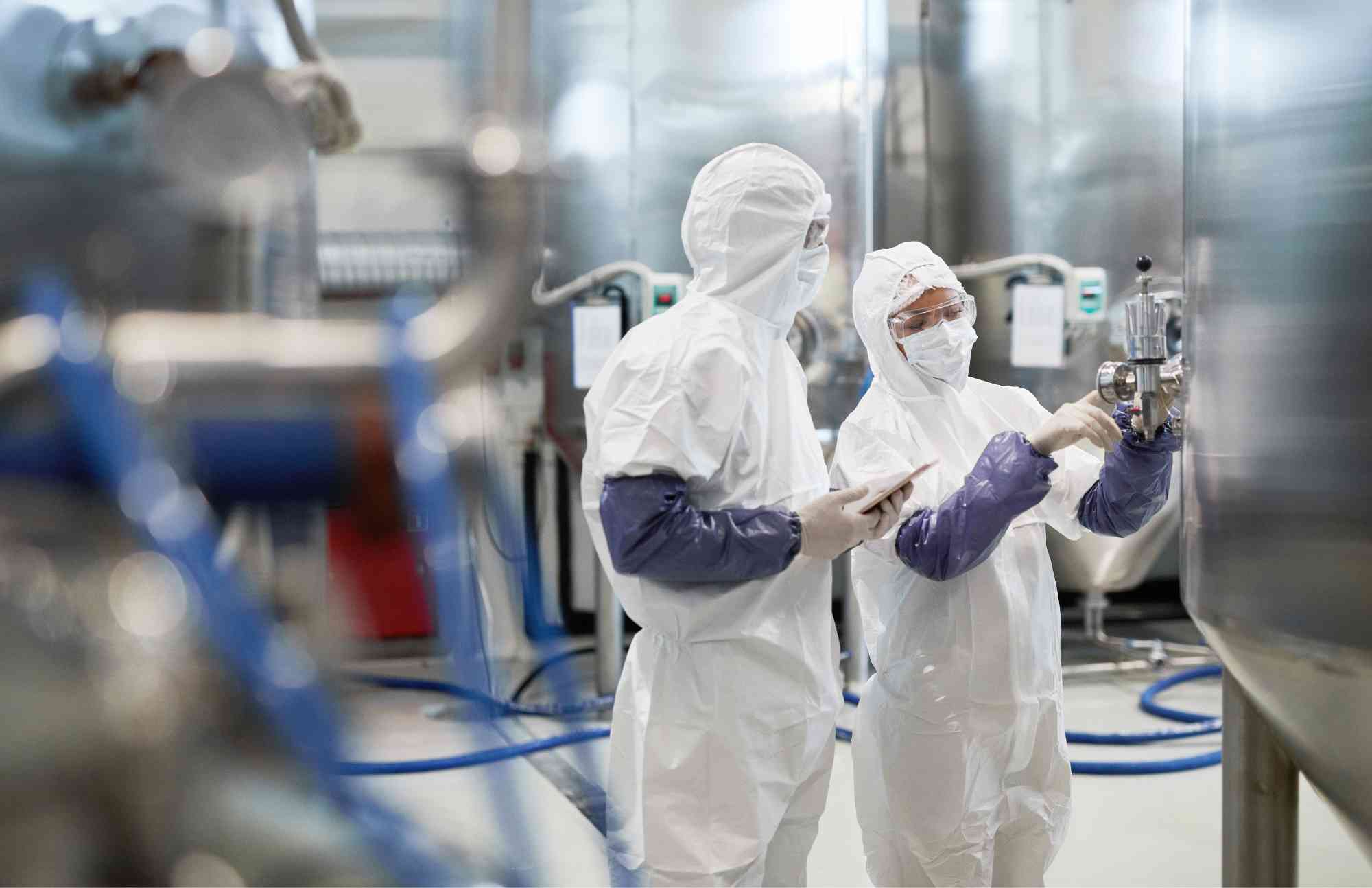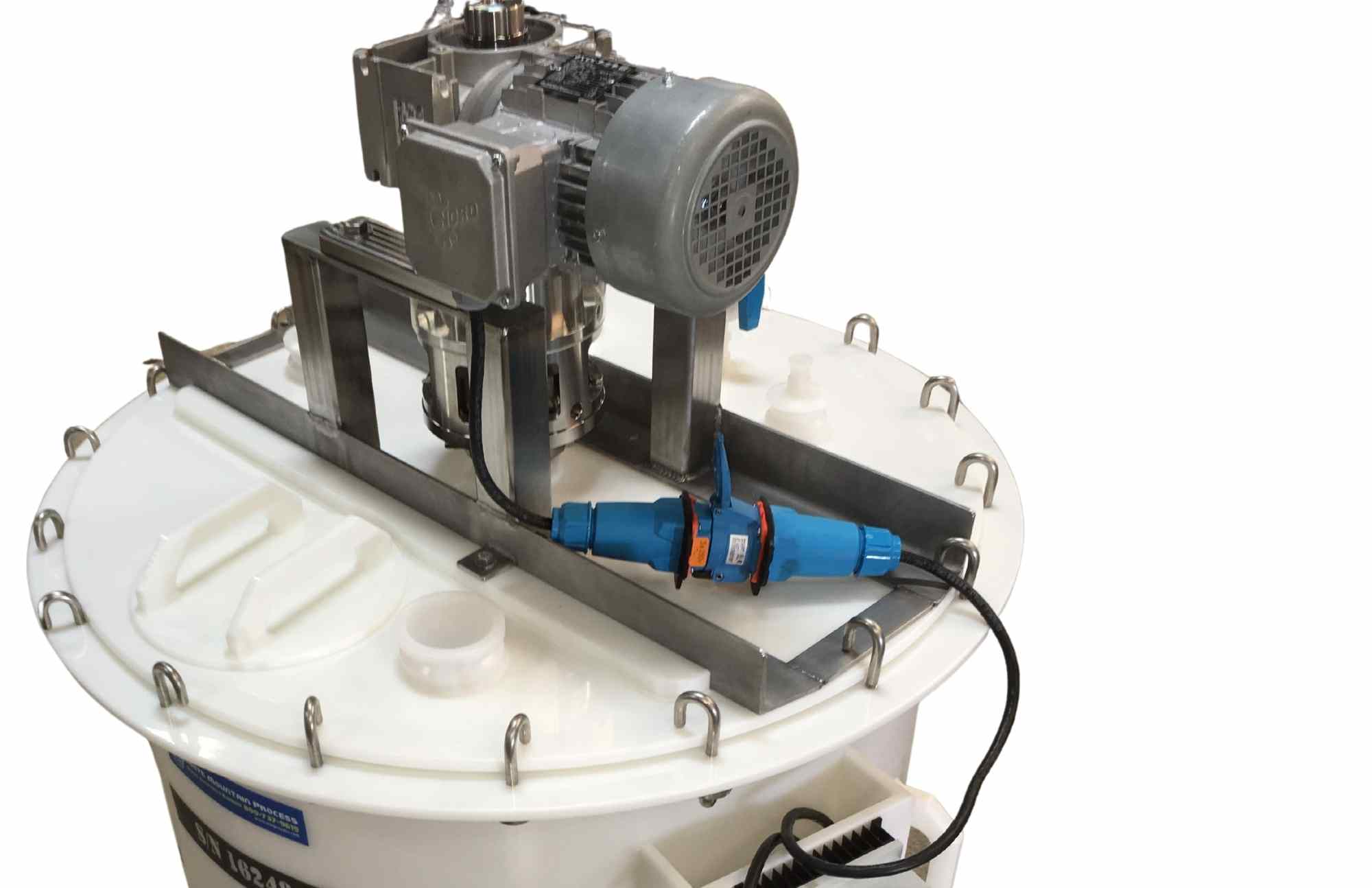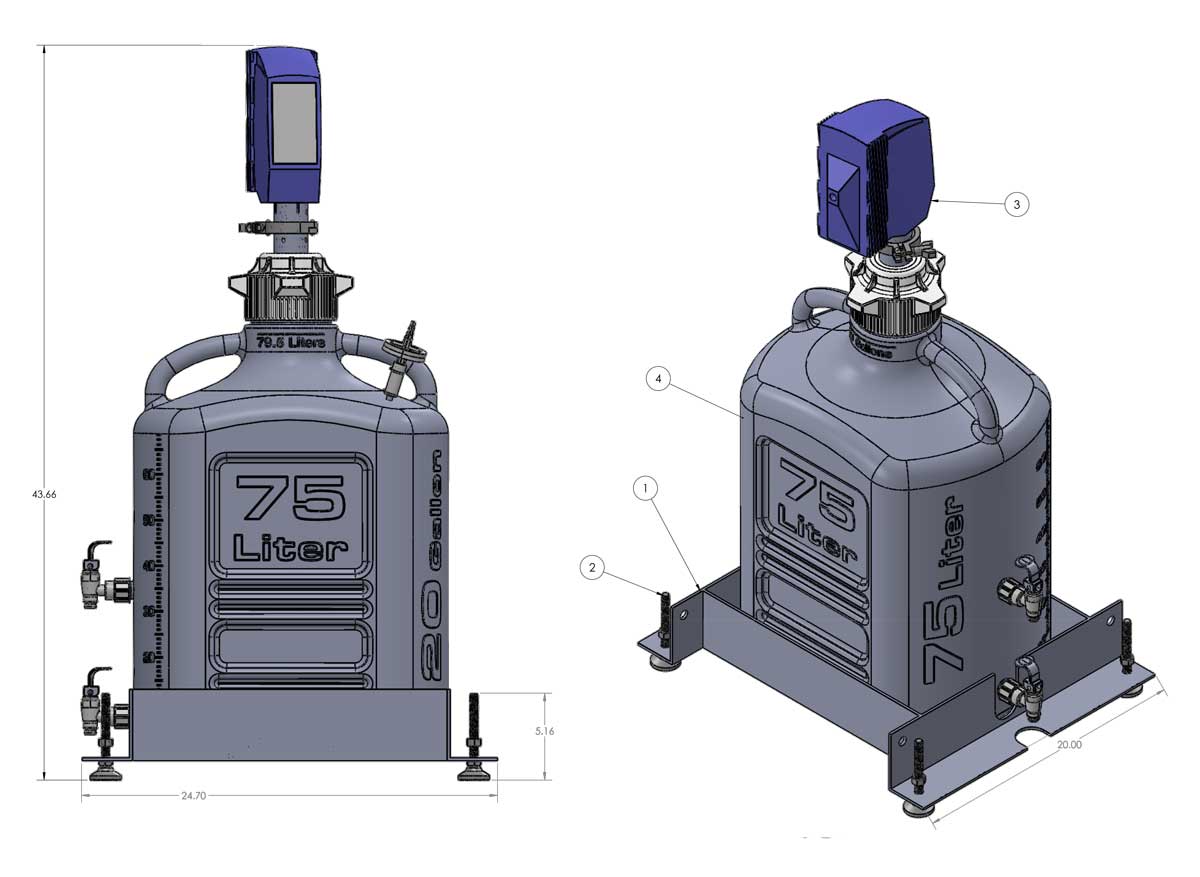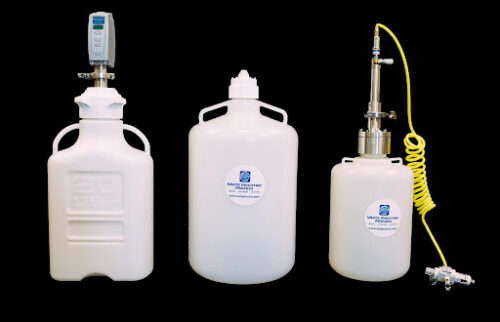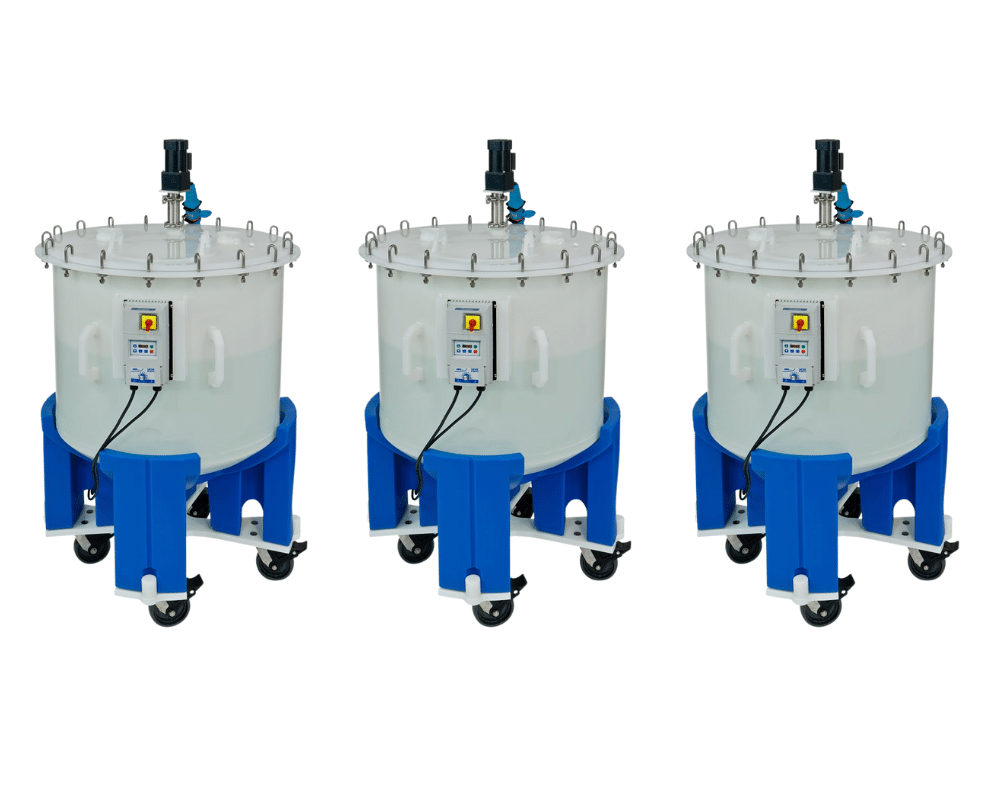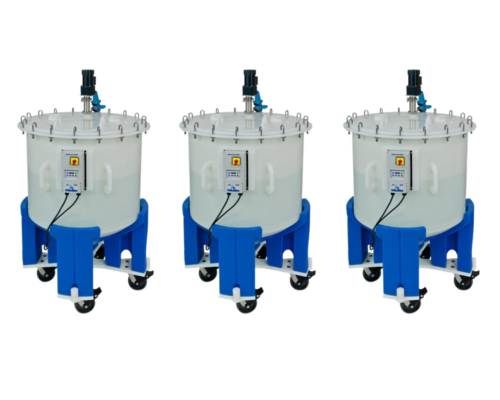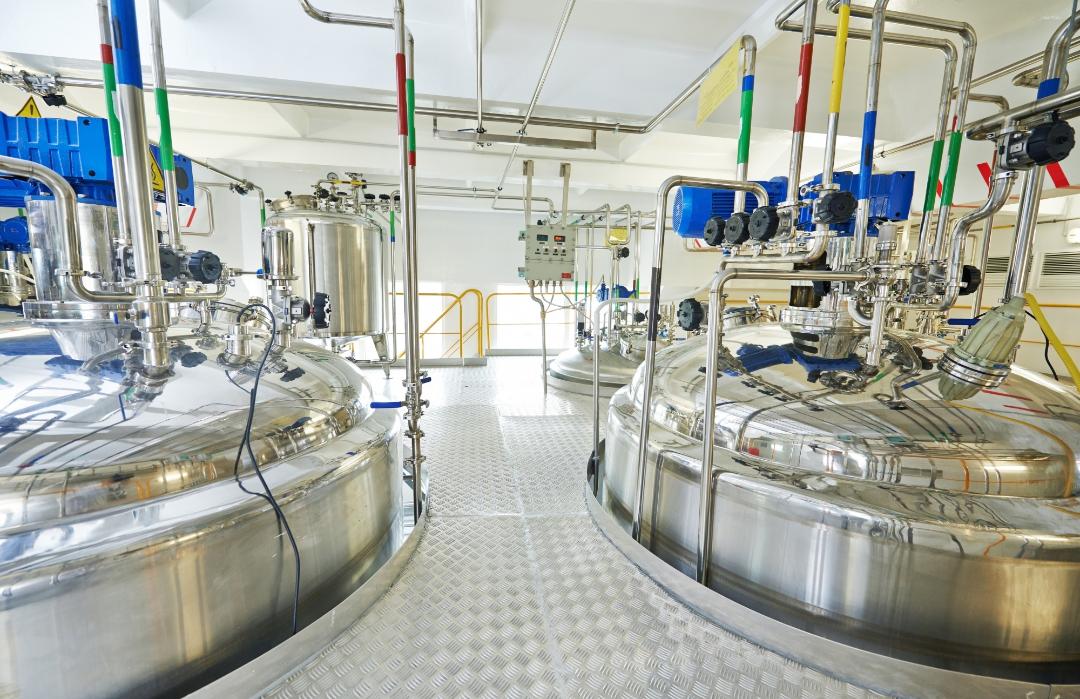Optimizing Buffer Preparation with Single Use Mixing and Lab Carboys:
Buffer preparation is a critical step in many laboratory, biotech, and pharmaceutical GMP blending processes. The right buffer preparation can ensure that the process is successful and that the desired results are achieved, but 100% mixing uniformity of all ingredients is mandatory. What mixing and blending systems are used for buffer and media prep:
- Mag drive stirrers – simple Teflon coated magnets go into a beaker and spin using a mag drive unit, these are simple and inexpensive mixing devices, although cannot be scaled up to production mixing tanks
- Carboy Mixers – off the shelf HPDE and USP VI PP carboys can be fitted with top entry carboy mixers which can quickly and efficiently provide homogeneous blending, with unform pH throughout the mixture
- Single use bag mixing, or single use carboy mixers – single use mixing systems work really well for waterlike mixing of buffer solution, and can be mixing impeller based or bag shaking type platforms
- Large scale buffer preparation is typically performed in traditional stirred tank systems, with a top entry agitator with single or dual mixing impellers
Many laboratories are now turning to single use mixing and lab carboys to streamline and optimize buffer preparation.
Overview of Buffer Preparation
Buffer preparation is a process that involves mixing together a solution of chemicals and water to create a solution with a specific pH and ionic strength. Buffers are used to maintain the pH of a solution, and they are essential in many laboratory processes, such as cell culture, protein purification, and chromatography. The process of buffer preparation can be time-consuming and complicated, and it can be difficult to get the right concentrations and pH values. That’s why many laboratories are now turning to single use mixing and lab carboys to streamline and optimize buffer preparation.
Understanding Single Use Mixing and Lab Carboys
Single use mixing systems are systems that are designed to quickly and easily mix and dispense buffer solutions. They are typically composed of a mixer, a carboy, and a dispenser. The mixer is used to stir and homogenize the buffer solution, and the carboy is a container for the buffer solution. The dispenser is used to dispense the buffer solution into containers or other vessels.
Lab carboys are containers that are used to store and transport buffer solutions. They are typically made of polypropylene and are designed to be lightweight and durable. They are available in various sizes and shapes, and they can be used in a variety of applications.
Advantages of Using Single Use Mixing and Lab Carboys
Single use mixing and lab carboys offer several advantages for buffer preparation. First, they are quick and easy to use, so you can prepare buffer solutions in a fraction of the time it would take to do it manually. Second, they are accurate and reliable, so you can be sure that the buffer solutions you prepare will meet the desired specifications. Third, they are cost-effective, so you can save money on materials and labor costs. And finally, they are safe and easy to use, so you can be sure that your laboratory is working in a safe and efficient manner.
Types of Single Use Mixers and Lab Carboys
When it comes to single use mixers and lab carboys, there are several types available. Depending on your needs, you can choose from static mixers, dynamic mixers, and recirculating mixers. Each type has its own advantages and disadvantages, so it is important to choose the one that best suits your laboratory’s needs.
Static mixers are the simplest and most economical type of single use mixer. They use a static mixing element to mix and homogenize the buffer solution, and they are ideal for smaller volumes of buffer solution.
Dynamic mixers are more complex and expensive than static mixers, but they are more efficient and better suited for larger volumes of buffer solution. They use a rotating mixing element to mix and homogenize the buffer solution.
Recirculating mixers are the most complex and expensive type of single use mixer, but they are the most efficient and are well suited for large volumes of buffer solution. They use a recirculating mixing element to mix and homogenize the buffer solution.
When it comes to lab carboys, there are several types available as well. The most common types of lab carboys are carboys with handles, carboys with spouts, and carboys with lids. Carboys with handles are the most common type and are well suited for storage and transport of buffer solutions. Carboys with spouts are ideal for dispensing buffer solutions into containers or other vessels. And carboys with lids are ideal for storing and transporting buffer solutions.
How to Choose the Right Single Use Mixer and Lab Carboy For Optimizing Buffer Preparation
When it comes to choosing the right single use mixer and lab carboy, there are several factors to consider. The first is the size of the buffer solution you need to prepare. For smaller volumes, a static mixer is usually the best option. For larger volumes, a dynamic or recirculating mixer is usually the best option.
The second factor to consider is the type of buffer solution you need to prepare. If you need to prepare a solution with a certain pH or ionic strength, you may need a more complex mixer. If you are just preparing a solution with a simple pH or ionic strength, a static mixer will usually be sufficient.
The third factor to consider is the type of lab carboy you need. If you need to store and transport buffer solutions, a carboy with handles is usually the best option. If you need to dispense buffer solutions into containers or other vessels, a carboy with a spout is usually the best option. And if you need to store and transport buffer solutions, a carboy with a lid is usually the best option.
How to Optimize Buffer Preparation with Single Use Mixers and Lab Carboys
Once you have chosen the right single use mixer and lab carboy for your needs, there are several steps you can take to optimize your buffer preparation. First, make sure the buffer solution is properly mixed and homogenized. This can be done by adjusting the speed and duration of the mixing process. Second, make sure the concentration and pH levels of the buffer solution meet the desired specifications. This can be done by adjusting the concentration of the chemicals and water in the buffer solution. Third, use a reliable and accurate dispenser to dispense the buffer solution into containers or other vessels. And finally, store the buffer solution in the appropriate lab carboy for easy transport and storage.
Benefits of Using Single Use Mixers and Lab Carboys
Using single use mixers and lab carboys for buffer preparation offers several benefits. First, it helps to streamline and optimize the process, so you can prepare buffer solutions quickly and accurately. Second, it reduces the risk of errors, so you can be sure that the buffer solutions you prepare are of the highest quality. Third, it helps to save time and money, so you can reduce labor costs and materials costs. And finally, it helps to ensure a safe and efficient laboratory environment, so you can be sure that everyone is working in a safe and productive manner.
Where to Find Single Use Mixers and Lab Carboys
If you are looking for single use mixers and lab carboys, you can find them at most laboratory supply stores. You can also find them online, but it is important to make sure you are buying from a reputable distributor. You should also make sure the single use mixer and lab carboy you choose is of the highest quality, so you can be sure it will meet your laboratory’s needs.
Conclusion
Buffer preparation can be a time-consuming and complicated process, but it doesn’t have to be. With the right single use mixing and lab carboy system, you can streamline and optimize buffer preparation and ensure that the buffer solutions you prepare are of the highest quality. Single use mixers and lab carboys are quick and easy to use, accurate and reliable, cost-effective, and safe and easy to use. So, if you are looking for a way to optimize your buffer preparation, single use mixing and lab carboys are the way to go.

